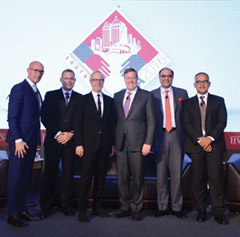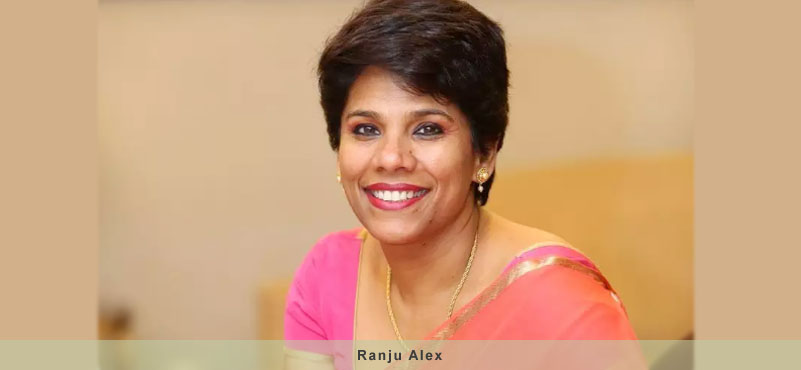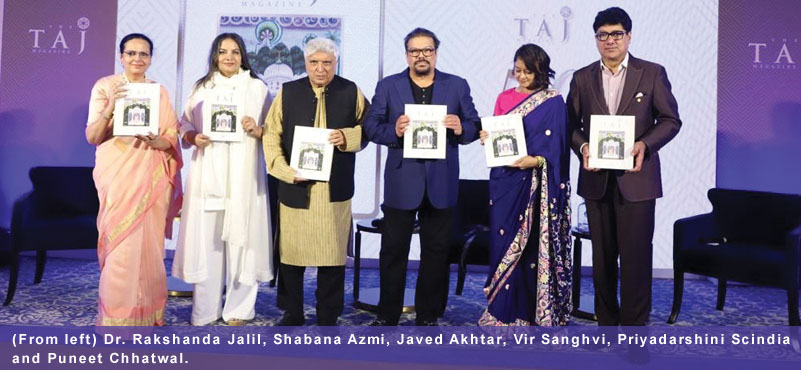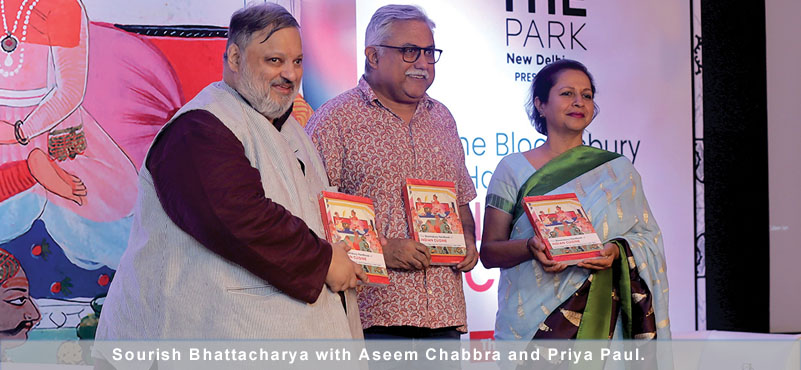With the economic fortune of the developed markets continuing to stay in a sluggish mode and some of the major pillars of the emerging economies club (Brazil and Russia) not exactly firing on all cylinders, the leading players of the hospitality industry are looking at India (alongwith China) as the favourite growth turf for a mid-run horizon. At the leaders panel discussion at HICSA convention yesterday, the senior representatives of the leading global hospitality brands exuded confidence that the growth momentum for their business would intensify in India in the coming years.
 The hour long deliberation began with the basic question – two years after the NDA government came into the saddle with the promises of transforming Indian economy and its various sunrise sectors, has it done something to enthuse the global leaders? “This new government is now two years old. And if we look at macro-economic parameters, GDP is growing by over 7 percent. But the moot point is: has the scene got better for the hospitality industry?,” asked Kapil Chopra, President, The Oberoi Group, also the moderator of the session. “Things are looking great for India. The forecast for India for the next ten years is that it will fast outstrip China in terms of GDP growth. Modi government has certainly created a positive environment. We are certainly looking forward to open more hotels in India. You need to have some patience to see the actual result of this positive mood. Just remember, the condition of airports in India in the past and how they have changed,” responded Criag Smith, President (Asia Pacific), Marriott International. Thorsten Kirschike, President (Asia Pacific), Carlson Rezidor spoke no differently. “Two years is too short a period to make a judgement. The overall sentiment, however, is positive. The real challenge going ahead would be to see the pace at which projects are executed,” he observed. Ratnesh Verma, President & MD, Whitbreads Hotels, however, issued a cautionary note. “We have always believed that India is a long-term story. The issue is: when will it become the now story? Does it have depth in the market beyond 5-6 cities? And there are plenty of regulatory and taxation issues for the hospitality industry. I would like to see some decisive movement towards the now story,” he opined. His company (operating 750 hotels in the UK alone), however, is opening two new units in India in the next six months – in Goa and Chennai. According to Thorsten, the Carlson Rezidor group which is considered to the fastest growing MNC hospitality firm in India, the company is now reaching out to the tier 2 & 3 markets. “We almost have a presence in every state capital. And now we have identified the vibrant tier 2 & 3 destinations for our future moves. We are entering in these places on the basis of our analysis (demand and sales equation) of these markets.”
The hour long deliberation began with the basic question – two years after the NDA government came into the saddle with the promises of transforming Indian economy and its various sunrise sectors, has it done something to enthuse the global leaders? “This new government is now two years old. And if we look at macro-economic parameters, GDP is growing by over 7 percent. But the moot point is: has the scene got better for the hospitality industry?,” asked Kapil Chopra, President, The Oberoi Group, also the moderator of the session. “Things are looking great for India. The forecast for India for the next ten years is that it will fast outstrip China in terms of GDP growth. Modi government has certainly created a positive environment. We are certainly looking forward to open more hotels in India. You need to have some patience to see the actual result of this positive mood. Just remember, the condition of airports in India in the past and how they have changed,” responded Criag Smith, President (Asia Pacific), Marriott International. Thorsten Kirschike, President (Asia Pacific), Carlson Rezidor spoke no differently. “Two years is too short a period to make a judgement. The overall sentiment, however, is positive. The real challenge going ahead would be to see the pace at which projects are executed,” he observed. Ratnesh Verma, President & MD, Whitbreads Hotels, however, issued a cautionary note. “We have always believed that India is a long-term story. The issue is: when will it become the now story? Does it have depth in the market beyond 5-6 cities? And there are plenty of regulatory and taxation issues for the hospitality industry. I would like to see some decisive movement towards the now story,” he opined. His company (operating 750 hotels in the UK alone), however, is opening two new units in India in the next six months – in Goa and Chennai. According to Thorsten, the Carlson Rezidor group which is considered to the fastest growing MNC hospitality firm in India, the company is now reaching out to the tier 2 & 3 markets. “We almost have a presence in every state capital. And now we have identified the vibrant tier 2 & 3 destinations for our future moves. We are entering in these places on the basis of our analysis (demand and sales equation) of these markets.”
The discussion by the hotel industry leaders also captured other interesting sub-plots which may be added to the growth story of Indian hospitality. For instance, branded residences – a segment which is being pushed by many hospitality majors in the developed markets. “Will it also take off in India in a big way in the coming years?,” asked Chopra. “We have looked at this opportunity in India a few times since we have successfully created such properties in the US market. We will have to look at market conditions here more closely,” said Jan Smits, CEO (AMEA), InterContinental Hotels Group. “Branded residences could be an exciting opportunity,” added Peter Fulton, Group President ( EAME and SW Asia). But according to Thorsten, developing branded residences does not seem to be easy at this stage. “Branded Residences have posed some serious challenge in many countries. And it primary because of its basic structure – there are multiple owners. And in India where we need more than 100 permits for a hotel project, we would opt to wait for better regulatory environment.”
The criticality of manpower issue in the Indian hospitality sector again found prominence in the discussion with the industry leaders venting out different solutions even as they were unanimous in their voice that the players themselves need to do more. “If we look at a country like India, there is no dearth of talent. The responsibility lies with us. We have to create a robust home-grown talent pool. We have to see that our eco-system offers right work balance to them and we are compatible with their requirements,” said Fulton.
The concluding part of the discussion probably raised the most pertinent point of the day – how does hotel industry combat the OTA threat? And industry captains emphasised that while the online players have become an integrated part of the business value chain, there is scope of better equation between the two sides. “I don’t think they are bad. The problem is they are becoming too demanding,” observed Craig Smith. “The consumers need comparison and we hoteliers need to be represented on all channels available. Travel agents have always been there. With OTAs, we need a more healthy association,” added Fulton.




































